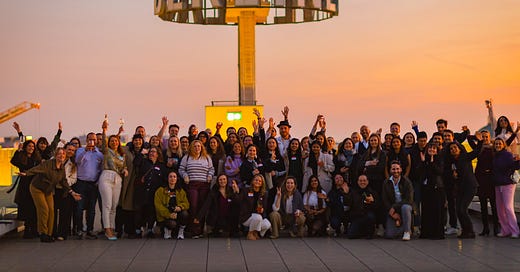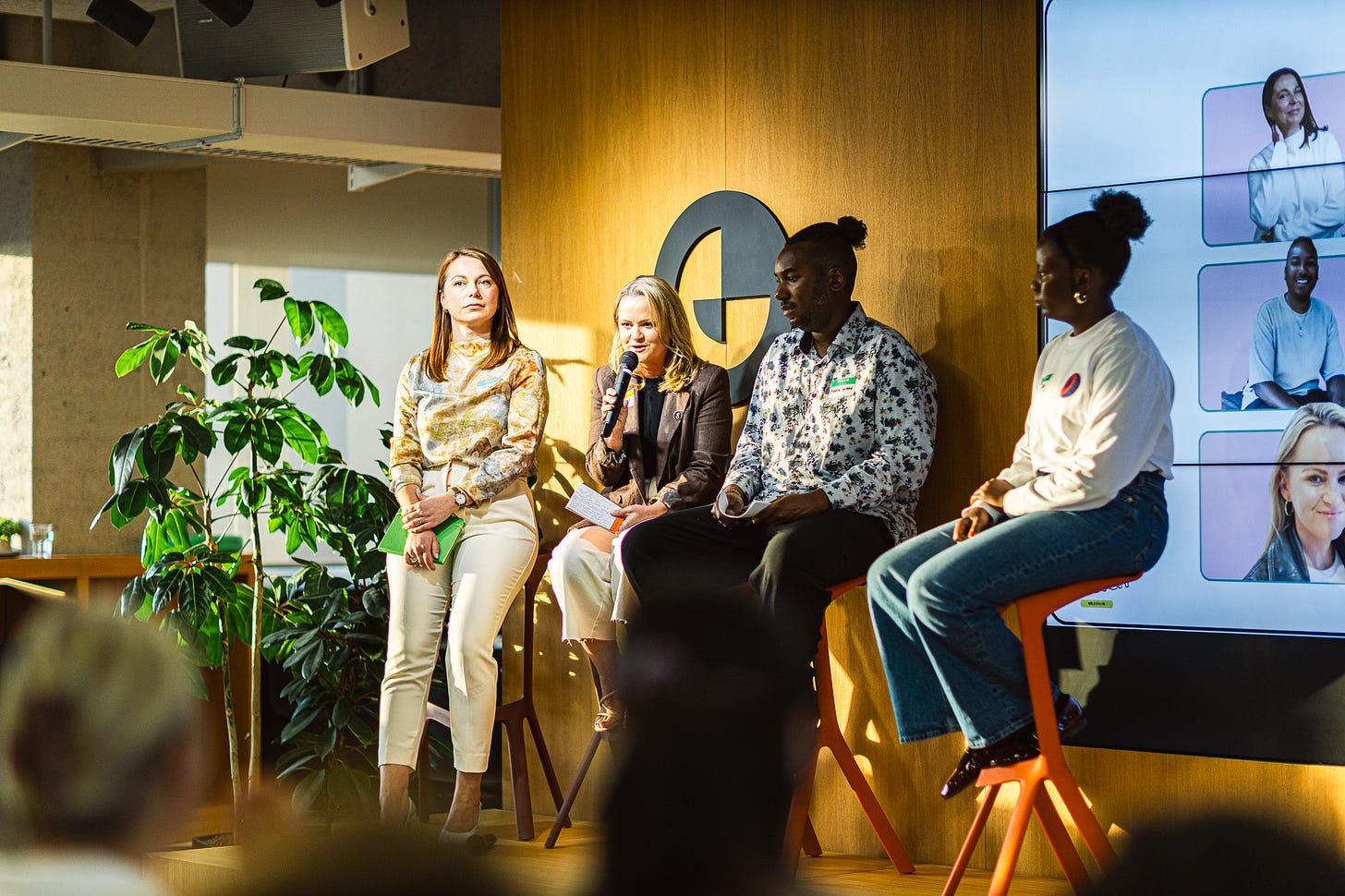DEI Isn’t Dead. It’s Just Been Badly Done.
What 100 People Told Us About Building Truly Inclusive Workplaces
On April 10th 2025, we hosted The Power of Inclusion, sponsored by Greenhouse Software and hosted at OLX HQ in Berlin. This wasn’t a ‘panel with snacks’, but we wanted it to be a working session. 100+ people showed up to co-create.
A lot of DEI work over the past decade has felt performative, disconnected from the real issues people face at work. Fancy titles. Shiny statements. Little follow-through.
That’s not how we do things at Talent Crunch. We didn’t want the energy to fade when the lights went off and the event finished. So here it is, what was said, what we learned, and how you can use this in your own workplace today.
The Setup
The event was structured around 3 short, punchy talks, each one designed to build on the other:
The First Ripple – Sarah Harnett on what changed when her team used data to expose gender gaps in engagement.
A New Perspective – Oana Iordachescu on how her temporary disability revealed the absence of inclusive design in the workplace.
The Ripple Effect – Mark Ivan Serunjogi on the evolution (not death) of DEI, and what the next chapter must look like, to stay relevant and effective.
Angela Ndagire held the line as moderator, keeping things sharp, human, and focused. Between speakers, we collected live input using Mentimeter: barriers, micro-inclusions, real examples, and captured every insight on visual boards.
The second part of the event consisted of 3 Workshops on the topic of belonging in the Workplace.
5 Real Insights From the Room
1. Inclusion dies in the details
Not having an accessible bathroom 🚻. No remote option for an interview. Onboarding built for extroverts. Inclusion is often undermined not by intent, but by oversight. These oversights create a slow, invisible exclusion that compounds.
“If your default processes exclude people, your values don’t matter.” – from our post-it board
These things are fixable. Most don’t require a DEI budget; just awareness and ownership.
2. Accountability means consequence, not only intention
This came up repeatedly.
Inclusive culture isn't about being nice. It's about defining what’s acceptable, rewarding those who live it, and calling out what isn’t.
Sarah’s story showed how transparency about broken systems, combined with actual leadership support, moved the needle. KPIs were added to manager scorecards.
They truly changed the way they worked.
3. Disability is still treated as ‘special case’ → make it Inclusive by Design
Oana’s talk made it clear that inclusivity by exception ("we’ll accommodate if you ask") still puts the burden on the individual. Most people don’t ask.
Because: Shame. Fear. Exhaustion.
Inclusive work should be the design / default: accessible interview formats, remote options, accessible bathrooms, tools like text-to-speech or adjustable lighting. If 20% of the population lives with a disability, this isn’t a niche!
4. We don’t need more DEI awareness, we need better systems
Mark’s closing talk reframed the backlash we’re seeing, that people aren’t rejecting inclusion; they’re rejecting performative DEI.
Stickers, slogans, and committees that don’t impact business as usual.
Real DEI is infrastructure work:
KPIs that include equity
Hiring that rewards inclusive leadership
Systems that create safety before you bring in diversity
Behavioural consequences that stick
🧨 And if your interview process is biased, no amount of allyship workshops will fix your pipeline.
As Mark put it: “You can’t hire your way out of a toxic culture.”
5. Your employees already have the answers
Between workshops and live boards, we saw it clearly: people know where the problems are.
They just need leaders willing to ask, listen, and act.
What You Can Do Tomorrow
(Straight from our workshops and community and leaders)
1. Add “Inclusive Process Review” to your next sprint
Use the sticky note approach: pick 3 common employee experiences, onboarding, feedback, meetings, and map how exclusion might creep in. Ask: who’s left out by design?
2. Build the Inclusive Leadership Cycle into your team rituals
A simple but powerful loop from our flipcharts: Transparency → Candid Feedback → Flexibility → Repeat ♻
If your team avoids hard conversations, it’s not inclusive, it’s fragile.
3. Set DEI KPIs beyond headcount
A team from the session shared they measure:
Psychological safety via anonymous quarterly check-ins
Emotional labour load (who’s doing the ‘extra’ work?)
Representation in decision-making spaces, not just in hiring
4. Normalise personal “user manuals”
Sarah mentioned how Greenhouse encourages teammates to write a simple doc: “Here’s how I work best, how to communicate with me, what to avoid.” This creates clarity and avoids assumptions.
5. Run a “Barrier Busting” Lunch & Learn
Inspired by our Mentimeter word clouds, you can ask: “What’s one barrier in front of inclusivity that you’ve faced at work?”
Bonus: Take DEI off the calendar and put it in the budget
Real inclusion shows up in:
Who gets sponsored and mentored
Who’s in the room when priorities are set
Who can afford to not code-switch all day
Make it operational. Put a price on it. Make it part of how you run the business.
We brought practitioners together who are tired of doing DEI for the slides and want to do it for real. And we had wonderful results. And we fulfil our promise to share everything we learn with the community.
If that sounds like your kind of community:
🧠 Join us.
🎤 Come to a future session.







